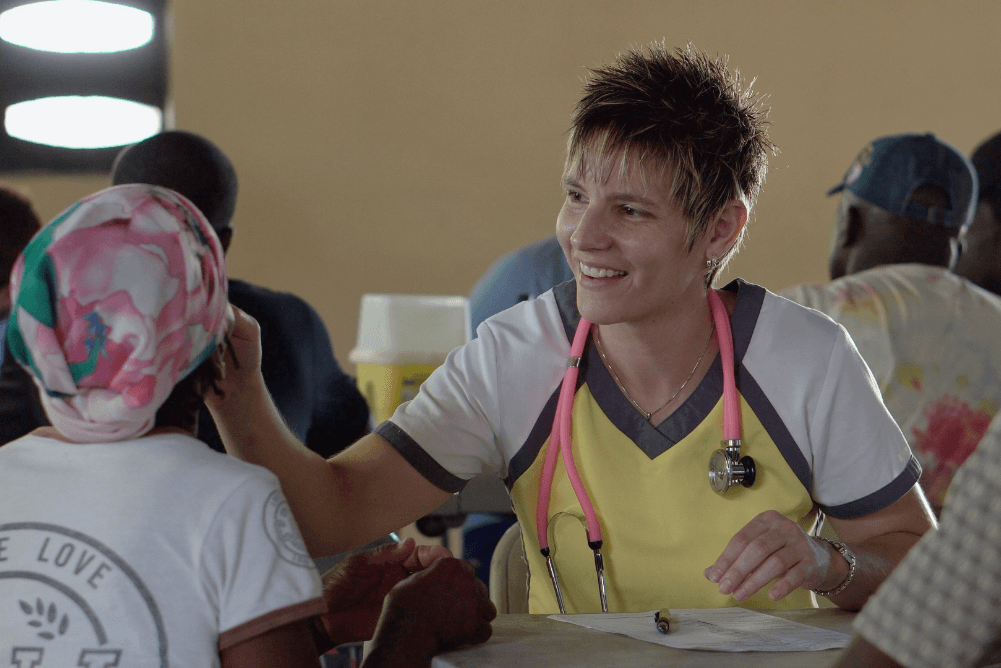What is Discharge Procedure in a Hospital?
Discharge is the process of preparing a patient to leave the hospital and return to their home. When a patient gets admitted to the hospital, they are simultaneously being prepared for discharge. They must be physically and mentally prepared to leave the hospital or ward.

A health care agency's care is terminated when a patient is discharged. Discharge planning begins when the patient's information is obtained and documented at the time of admission. The interchange of information between the patient, caregivers, and those accountable for care while the patient is in the acute care setting and after the patient returns home is critical to successful discharge planning. The nurse and the admin are usually in charge of this type of care coordination. Effective discharge necessitates meticulous preparation and ongoing assessment of the patient's needs throughout their stay in the hospital. Planning for discharge should start soon after the admission of the patient.
Discharge is the process of preparing a patient to leave the hospital and return to their home. When a patient gets admitted to the hospital, they are simultaneously being prepared for discharge. They must be physically and mentally prepared to leave the hospital or ward. The plan developed before a patient is transferred from one environment to another is known as discharge planning. The patient, family, friends, and hospital and community healthcare staff are all involved in this process. Discharge planning is an important element of ensuring that patients receive consistent nursing care throughout their hospital stay.
Purpose
- To ensure that the patient's care is continued after they have been discharged.
- To help the patient in completing all necessary hospital paperwork before returning home.
- To assist the patient in returning to an ideal state of self-sufficiency.
- Assisting the patient through the discharge procedure
- Recognize the right of patients to choose whether or not to stay in the hospital.
Discharge Requirements
- Cured
- Transferring to a different hospital
- Discharged due to request
- Discharged against medical advice
- Death
Equipment
A wheelchair, unless the patient is being transported by an ambulance, the patient's chart, patient instruction sheets, discharge summary sheets, a plastic bag, or the patient's suitcase for personal things are all required.
Basic Instructions
Prepare the patient and family for their stay in the hospital by providing them with precise yet sufficient information on the expected discharge date, the estimated patient bill, and any necessary home care.
Departments that’ll need to be updated
- Returning drugs to the pharmacy department
- Nullifying a certain diet
- Charges for oxygen and ventilation
- Department of Accounts
- Section of Billing
A Preliminary Evaluation
- For discharge, look through the doctor's written orders.
- Notify the patient and their family of the discharge.
- Keep a record of any pertinent discharge information.
- Ensure that all fees, such as checkup services by specialists, unique substances or gadgets, doctor or surgeon fees, and narcotic drug usage, are included (if any)
- Procure a discharge prescription after keeping the medicines that are to be continued for that day and also after discharge. Please return all other medications for a refund (including ward replacement)
- Send the chart to the billing section, along with any pertinent information.
- When one bill is ready and the chart is returned to the ward, make sure it is settled. In the discharge bill, look for the signature of the cashier.
- Assist the patient in obtaining a discharge report, a medical certificate, and prescription medicines.
- Ascertain that the patient is informed about medication follow-up, outpatient visits, and other necessary information.
- Accompany the patient to the exit gate for transport.
- Notify the patient's family of the time and date of discharge before the day of discharge.
- Obtain a physician's documented discharge order. Obtain the relevant form if the patient releases themselves against the medical recommendation.
- Confirm arrangements with the appropriate facility department or community agency if the patient requires home medical care.
- Review the patient's discharge care plan (which was started on admission and changed during their hospitalization) with the patient and their family on the day of discharge. On the patient instruction sheet, write down the recommended drugs, the dosage, the specified schedule, and any adverse responses he should report to his doctor. To avoid inappropriate administration and encourage patient compliance, make sure the medicine schedule is compatible with the patient's lifestyle.
- Examine the steps that the patient or their family will take at home. Demonstrate these procedures, if necessary, provide written instructions, and double-check performance with a follow-up demonstration.
- List any food or activity restrictions on the patient instruction page, as well as the reasons for them.
- Check with the patient's physician about their next visit; if the physician hasn't already done so, notify the patient of the date, time, and place.
- Retrieve the patient's valuables from the facility's safety and go over each item with him. Then get the patient's signature to confirm that you got their belongings.
- Take and record the patient's vital signs on the discharge summary form, if necessary. Notify the doctor if you notice any unusual symptoms, such as a high temperature or something.
- If required, assist the patient in getting dressed.
- Take the patient's items out of their room.
- Help the patient onto the wheelchair and lead them to the exit after searching the room for misplaced possessions; if the patient is departing by ambulance, assist them in doing so.
- Strip the bed linens and alert the housekeeping crew that the room is ready for terminal cleaning after the patient has left.
Certain Points to Consider
- Include the patient's family in discharge planning whenever possible so that they can better comprehend and perform patient care procedures.
- Perform a physical examination on the patient before releasing them. Notify the doctor if you see any unusual indicators if the patient develops new symptoms.
Documentation
- Keep track of the time and date of the patient's discharge.
- The physical state of the patient
- Instructions for a certain diet or activity
- Patient's medication schedule
- Time Schedule of their follow-up appointments
- Name of the person who is escorting the patient from the hospital and their means of departure/transport
- If necessary, a synopsis of the patient's hospitalization.
Post Discharge
- At the moment of departure, note the time, date, and patient's condition.
- Send the chart to the medical records department and notify the relevant departments.
- After the patient is gone, the bed should be washed, the blankets should be maintained in the sunlight, and the Mackintosh sheet should be washed and dried.
- The room must be cleaned along with the utensils for future use/next patient.
- In the event of an infection, utensils should be disinfected before being cleaned. The linens should be disinfected before being sent to the hospital laundry.
- When discharging medicolegal cases, the patient's body should be given over to the police, and the patient's discharge/death should be reported to the appropriate police station.
- When a patient or a dead body is given over to the police, the patient or the deceased person requests that the police sign a document with the date and time.







